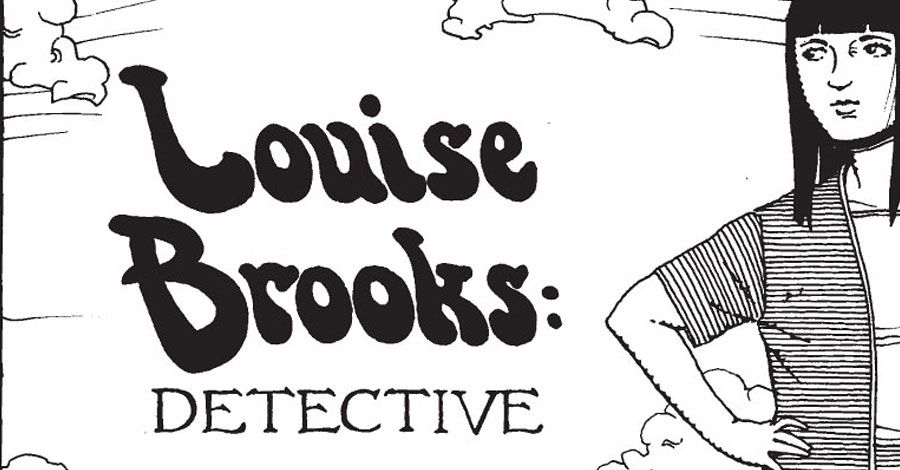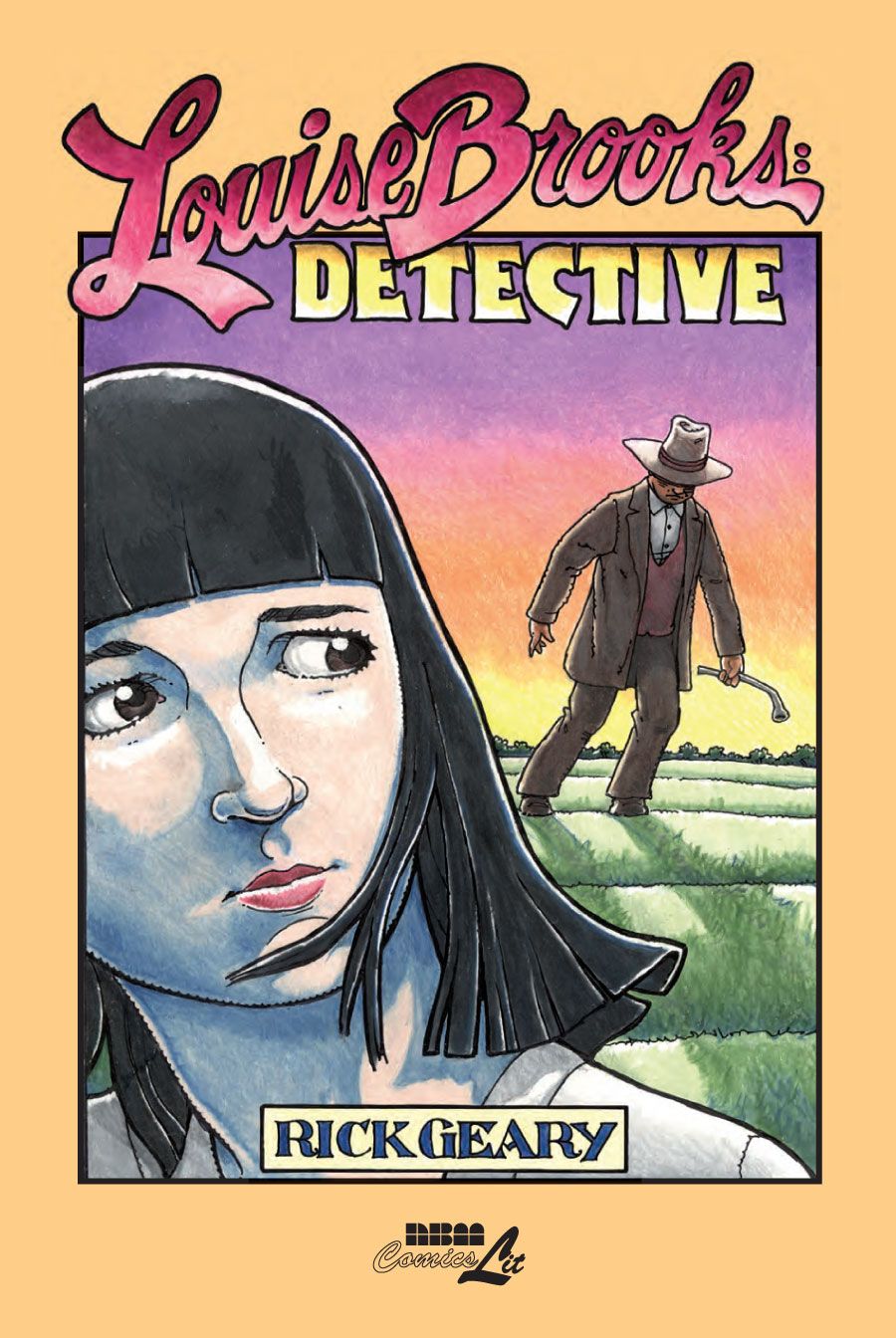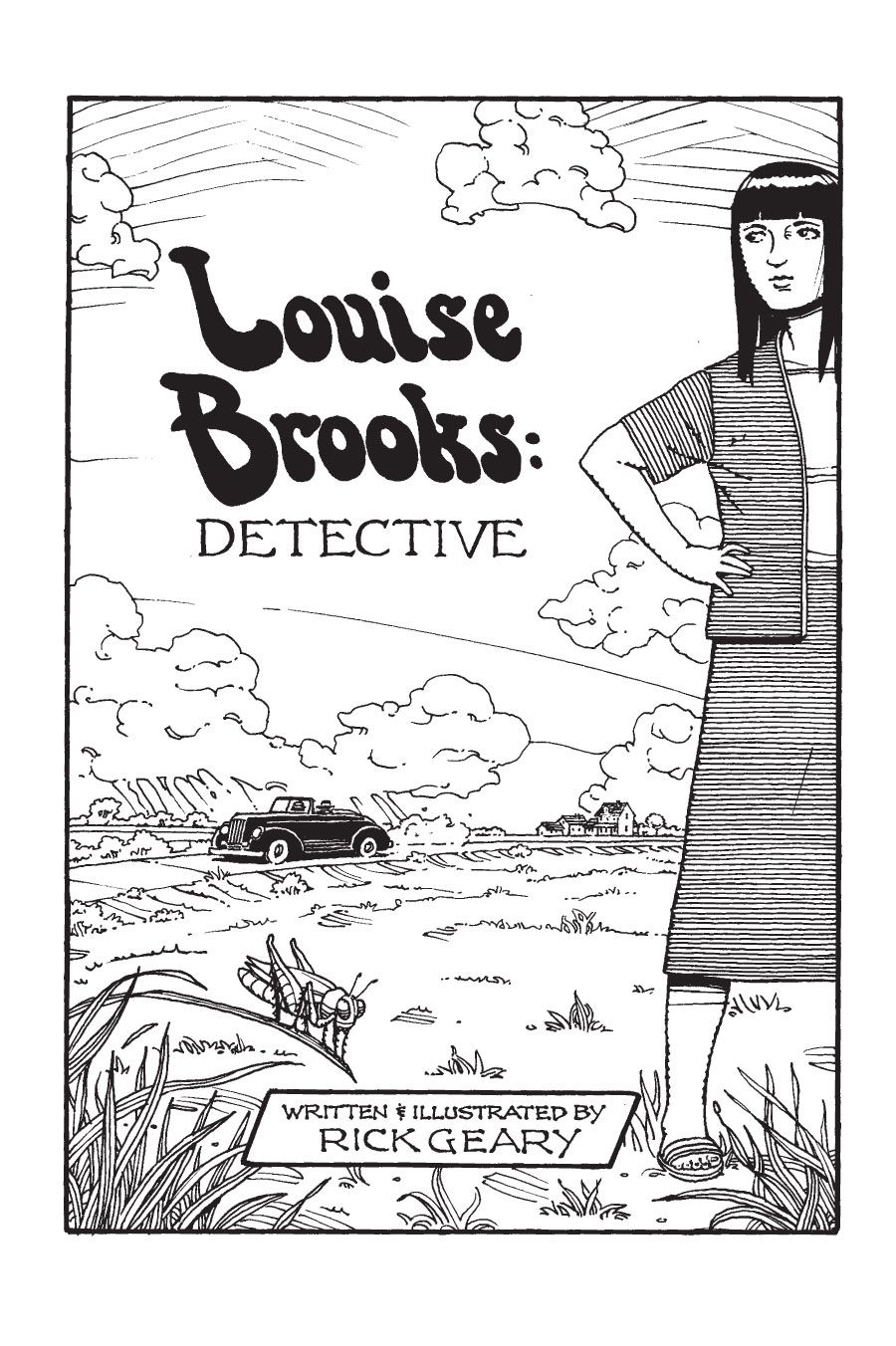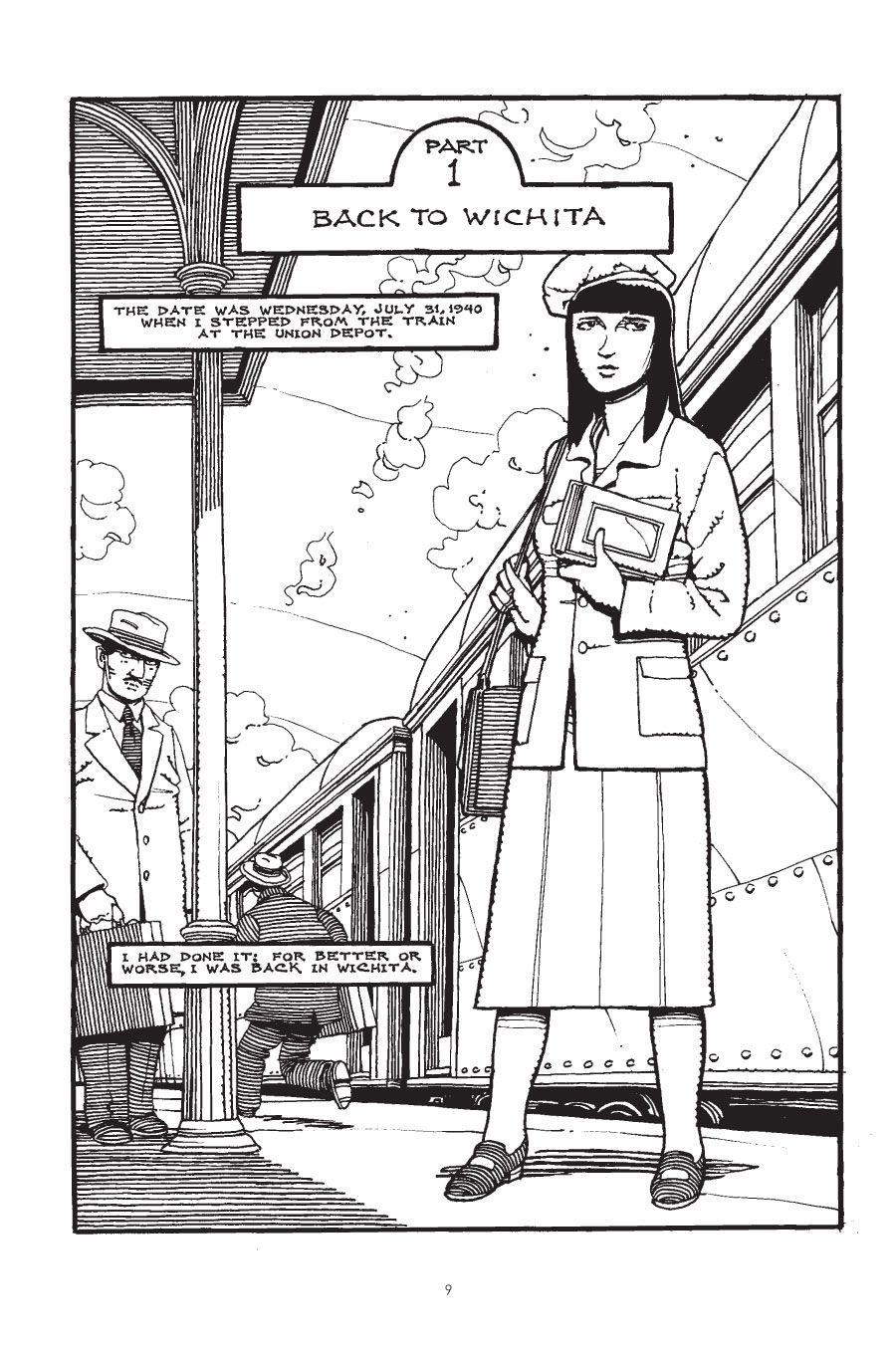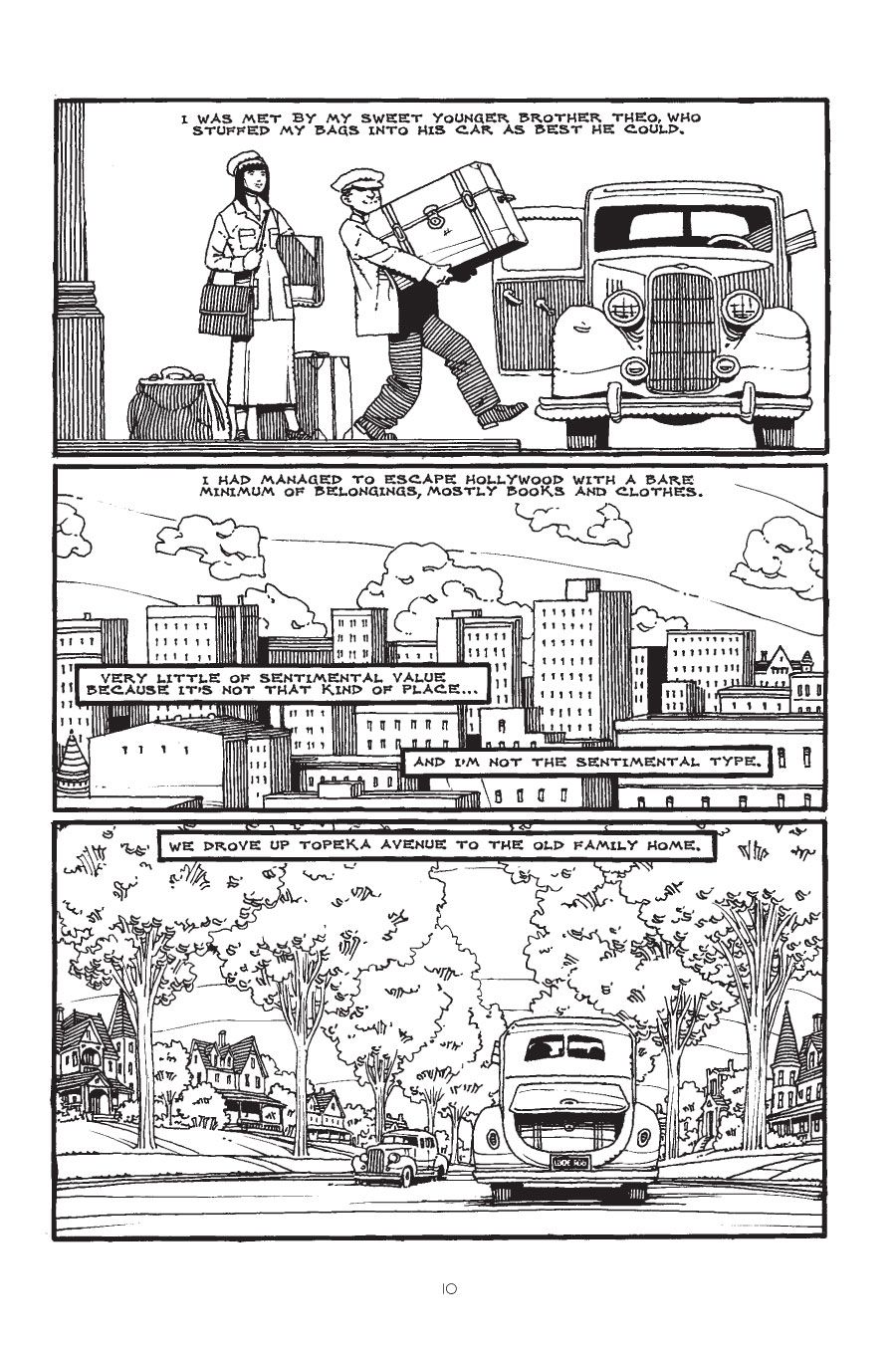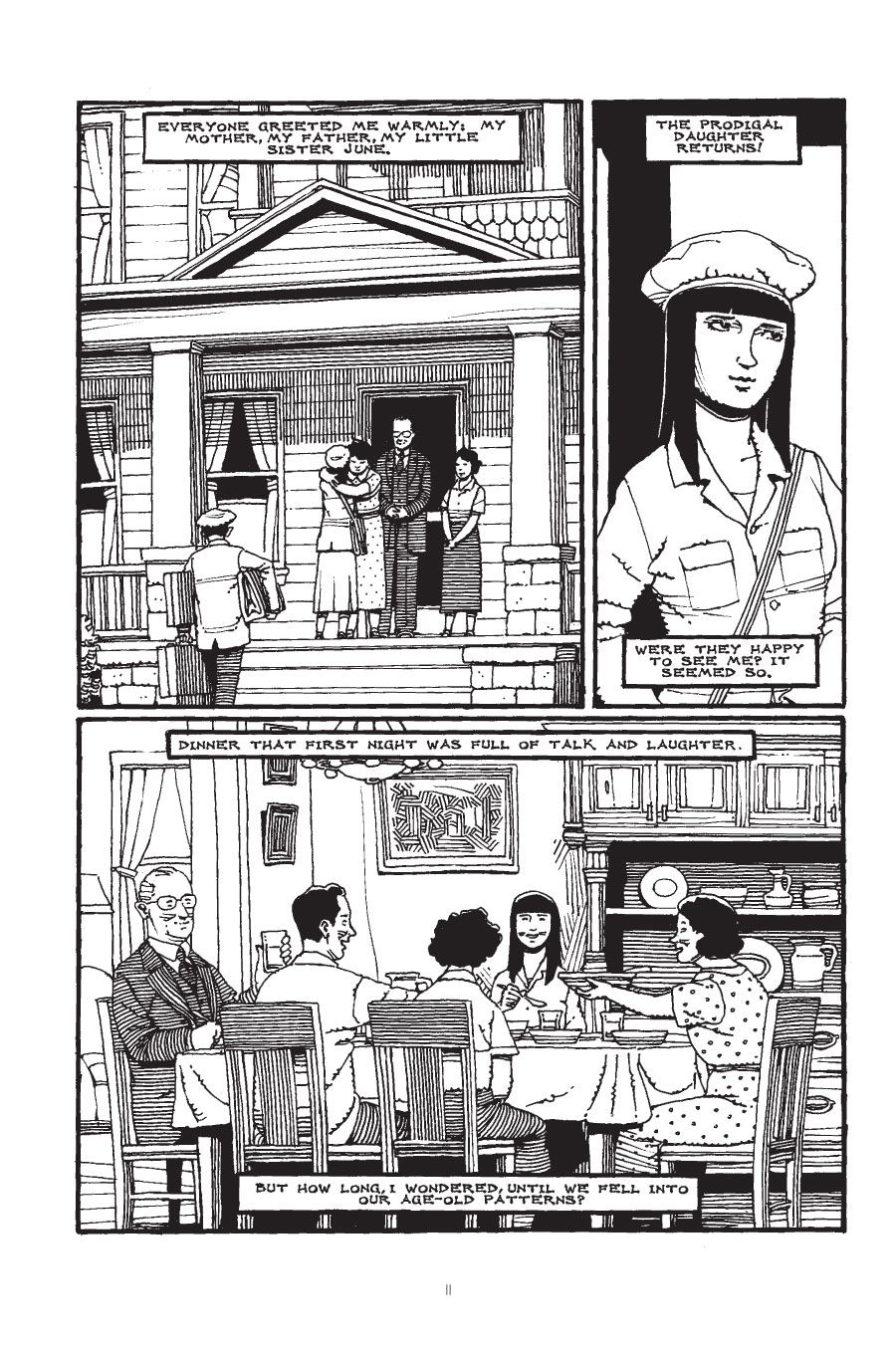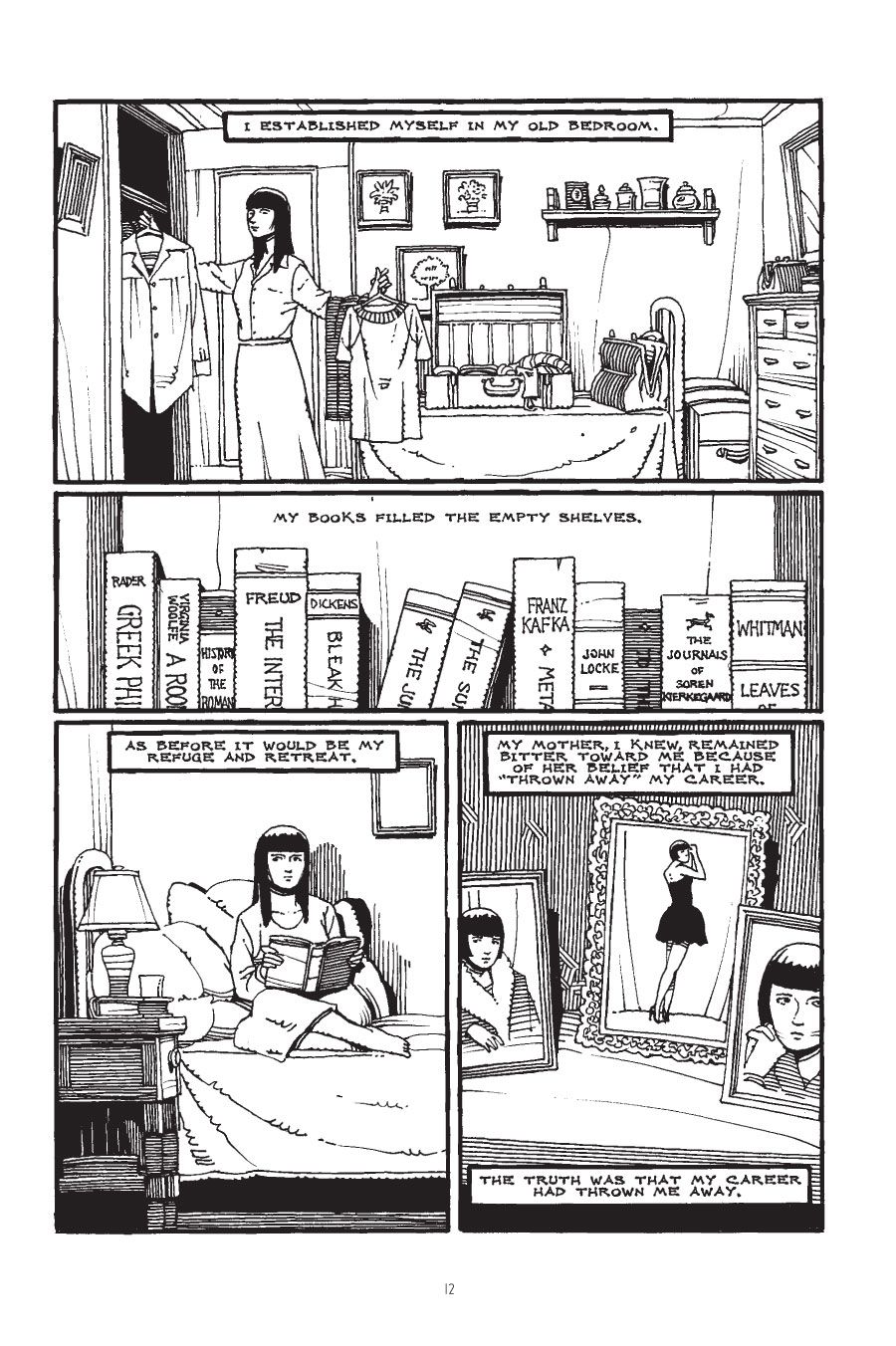While Rick Geary has written and drawn many comics over the years, many consider his best work to be found in the acclaimed series "A Treasury of Victorian Murder" and "A Treasury of XXth Century Murder."
RELATED: Geary Makes Crime Look Good In "The Murder of Stanford White"
And while his latest book, "Louise Brooks: Detective," is still firmly rooted in the world of crime, it marks a bit of a departure from the cartoonist's "XXth Century Murder" work. Set in the 1940's in Kansas, the book, published through NBM's Comics Lit imprint, features the legendary silent film star Louise Brooks, but rather than a real-life story, it's a fictional murder mystery tale set in Southeastern Kansas, where Brooks -- and Geary -- grew up.
Geary spoke with CBR News about his new book, his love of Louise Brooks's story, and how he got past his initial trepidation over crafting a story based on the Black Dahlia case for his next "XXth Century Murder" installment.
CBR News: You've been telling true crime stories for many years. What made you interested in writing a real world character like Louise Brooks in a fictional situation?
Rick Geary: Alongside my fixation with true murder cases, I have always been a voracious reader of mystery and detective fiction. When Terry Nantier of NBM offered me the chance to do a fictional book as a change of pace, I jumped at it.
I had considered for some time doing a murder mystery set in Kansas in the 1930s. I envisioned it as a kind of tribute to that part of the state where I grew up: the city of Wichita, and the tiny town of Burden, where my mother was born. I don't know where it came from, but the idea hit me to make Louise Brooks the heroine and detective. This was not as outrageous as it might as first seem, since Louise came from this corner of the state too (both her parents were born in Burden) and she retreated to Wichita for about two years after her show business career collapsed in the late 30s. So this book is an instance of several different strands coming together.
When did you become a Louise Brooks fan?
Louise Brooks was a dancer and actress who had a brief career in silent films in the late 1920s. She's best known today for the 1929 German film "Pandora's Box," a landmark in screen eroticism. Her sleek image, with the bobbed hair and bangs, has become an icon of the twentieth century.
I had for some time been aware of her as an image, but it was not till the early '80s that I learned that she was a relative of mine. She and my mother were second cousins, and both hailed from the same area of southeastern Kansas. After that, I read up on her life and sought out her films, very few of which were available at that time.
Was there a challenge in depicting her? So many people know what she looks like, but you're not depicting her when she made her films.
Yes, depicting her was a challenge, since I intended to tell the story in the first person, from her point of view. I wanted to capture her particular voice but at the same time make her a little more approachable, since in real life she could be sharp-tongued and rough-edged.
I was familiar with her literary voice from the salty memoirs she wrote about her days in Hollywood and Germany (collected in the book "Lulu in Hollywood").Plus, I had watched several filmed interviews, recorded in her later years, filled with brittle intelligence and keen observation. As I mentioned earlier, I sought to smooth out her rough edges just a little for this story, which, after all, is just a detective yarn.I call it "Louise Lite."
Did this book require less research than typical for you projects?
My work on this book wasn't incredibly different from my usual process. The main difference was that for the non-fiction cases, I set aside about six months for reading and research. In this case, the time was spent in construction of the plot, but otherwise my process followed the same route of laying out the pages, pencilling and inking.
The research into the period was as much as I do for a non-fiction work, in this case, getting the early '40s fashions and cars just right, and recreating the buildings and sights of Wichita. Fortunately, the town of Burden, though with a few modernizations, looks pretty much as it did back then.
You mentioned that you grew up in this area. Was that a help or a hindrance in terms of getting the details right-particularly a place you know well where some things have changed a lot and some have not.
I believe my background in this part of the country was a definite help, because even if the locations have changed in large and small ways, I still have a feel for the place. Those sweltering Kansas summers remain a part of me.
What's next for you?
I'm currently working on the next volume in the "XXth Century Murder" series: The unsolved murder of the Black Dahlia in Los Angeles in 1947.
I will also be introducing a new project for Kickstarter funding this summer: a fictional murder mystery set in Hollywood in 1915. With this one, I'm trying something a little different by telling the story in full-page illustrations with a caption beneath each. I hope to have "Murder at the Hollywood Hotel," up on Kickstarter on the first of July, and I'll be displaying the completed pages at the San Diego Comic-Con.
What made you decide to tackle the Black Dahlia story?
I have long been fascinated by this case, which is not only a great mystery, but very atmospheric, set amidst the dark underbelly of '40s Hollywood, a world of hangers-on, fringe-dwellers and criminals. It has always been on my short list of stories to do next for the murder series.
You mentioned in a past interview that you worried that telling the story of the Black Dahlia might be too gruesome for you. What changed your mind? Or did you think about an approach to it that would work?
I generally back away from depicting gruesome details, and for this reason I hesitated for a long time to take on the Dahlia case. But I kept thinking of a way to approach the material and finally decided to just plunge in. The most shocking aspects of the crime are confined to the early pages, which depict the discovery of the body and the autopsy, and these I attempted to present in as detached a manner as possible, using overhead views and diagrams.

